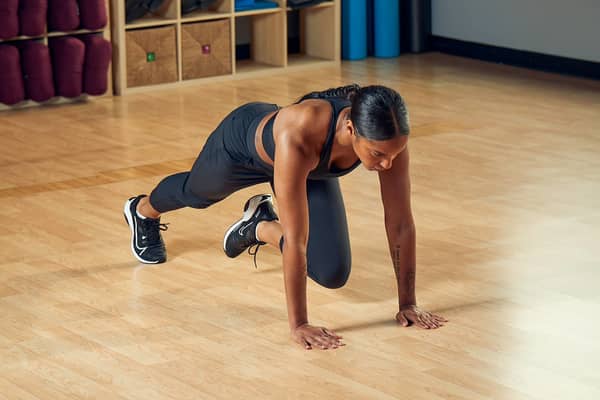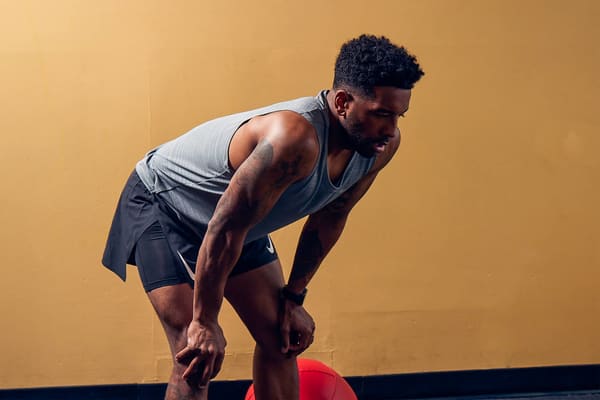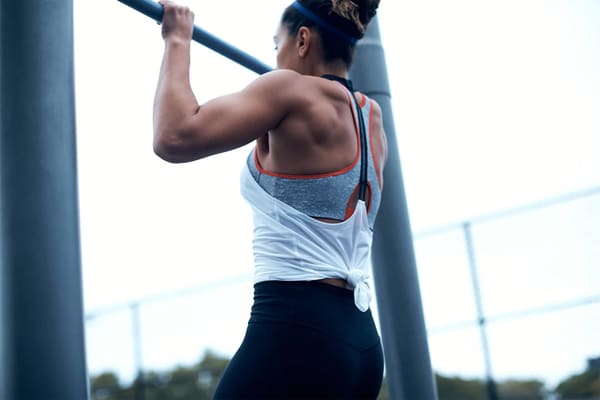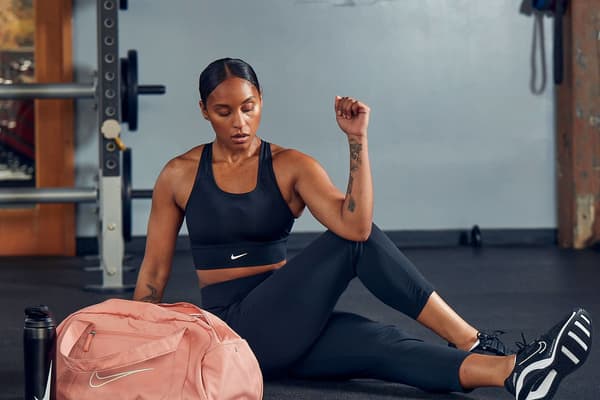So What's a Callisthenics Workout Anyway?
Sport & Activity
Find out more about bodyweight exercises that can tone your body.

Apart from lifting weights, there are plenty of exercises that can help you improve your strength, including those that fall under the callisthenic training umbrella.
But with a broad range of movements included in this group of muscle-toning exercises, it can be hard to identify which exercises count as callisthenics and how it might be beneficial to add them to your workout routine. Below, we walk through the basics of callisthenics exercises, their advantages and limitations, and how you can implement some callisthenic training into your next workout.
What are callisthenics?
Callisthenics is a fancy word for bodyweight training, or exercises using little to no equipment. The term is a catch-all for a whole range of different movements including push-ups, pull-ups, squats, crunches and more. In action, these exercises are often a part of bootcamp-style circuit and HIIT workouts.
Simply put, if you're using your bodyweight as a form of resistance, that's callisthenic training.
What are callisthenics and how can they benefit me?
Callisthenics exercises can be a good place to start for those who are beginning to follow a consistent exercise routine—especially if you don't have any pre-existing injuries or other physical limitations. Common exercises include push-ups, sit-ups, bodyweight squats, star jumps and planks.
As is the case with any new type of workout, there can be a bit of a learning curve. People starting out might need modifications as they build strength and form (think doing wall push-ups instead of traditional push-ups, or doing squats onto a chair rather than lower to the ground). But there is far less risk of injury involved in attempting a bodyweight exercise than trying to swing a kettlebell or lift a barbell stacked with weights on a bench press.
For Jeremy Fernandes, a Precision Nutrition-certified strength trainer, the safety and accessibility of bodyweight exercises is one of the reasons he likes to incorporate the various callisthenics into both his own routine and routines for his clients.
"If you're looking to get your heart rate going and get a good sweat on, callisthenics can tick that box", Fernandes said. "[If] you've never worked out before, something like a push-up or squat might be intimidating, but there are ways to modify them to your fitness level. It can take years of specified work and training to get to the levels of people doing multiple muscle-ups, but attempting your first few bodyweight lunges is an easier and safer way to start than trying something like a deadlift".
The relatively low-stakes nature of these exercises also makes them a great tool for people looking to improve shoulder, back or knee pain.
"Doing isolation holds and finding positions where you can put muscles under basic tension for a really long time is useful when you're trying to rehab those muscles", Fernandes said. "It can introduce movements that are less likely to cause any pain. There is a very low likelihood of pain with those types of holds and, if you do feel any pain, you can disengage without dropping a dumbbell or barbell on your face".
The benefits of callisthenics and isolation holds for rehab and pain management have been backed up by research, but for the best results, consider constructing a consistent fitness plan—or have an expert do so for you—that caters to your specific needs and goals.
The biggest advantage that callisthenics has over other types of exercise is that you don't need weights or additional equipment to do the majority of the exercises, with the exception of things like pull-ups or skipping with a rope. As long as you have enough space to perform the movements, you can do them just about anywhere. These exercises are especially handy if you're away from home or if a membership at your local gym is costly.
Can callisthenics help build muscle?
Callisthenics are certainly better than no exercise at all when it comes to building muscle, but they're not the most efficient way of getting big. According to NASM-certified personal trainer and wellness coach Gillian Young Barkalow, there are more efficient ways of getting it done—that is, if muscle growth is your goal.
"With callisthenics, you are limited to your bodyweight for resistance training. You can stimulate new muscle growth by making exercises more challenging, adding extra reps and making improvements to your [diet]. But you may reach a limit on how much growth you can accomplish as you're limited in how you can keep adding more progressive overload", Young said.
This isn't to say you can't produce a positive impact on your body composition or break a sweat using bodyweight training alone (ask anyone who has tried to do several consecutive sets of pull-ups), but callisthenics aren't going to be the best tool for every element of your workout routine. In short, don't be afraid of weights if you're trying to gain muscle.
Don't miss Can Your Legs Get Stronger from Running?
How do I incorporate callisthenics into my workout routine?
Figuring out how to incorporate bodyweight training into your workout routine will largely depend on what you want to achieve from your workouts. The key is knowing what your goals are. Then you can find exercises and a pace that works towards those goals.
"I would suggest starting small and slow and building up speed, reps and difficulty levels over time", Young said.
To get a quick full-body workout using only callisthenics exercises, consider incorporating the following: a push-up variation, a lower-body movement such as a lunge or squat, a core exercise like a plank or sit-up, and a burpee or star jump. Do 10 reps of each and complete a few sets, giving yourself a little of rest between each set.
Bottom Line
Bodyweight exercises can be a part of a great workout, especially if you don't have access to equipment. While getting the form down has a learning curve, especially for more complicated moves, doing callisthenics exercises is a great way to kick-start an exercise routine—as they're lower risk for injury compared with moves that involve weights. Whether you're just starting out or looking to shake things up, the low-impact nature of callisthenic movements can add value to your next workout.
For more expert-backed tips, make sure you download the Nike Training Club App!
Words by Graham Isador





